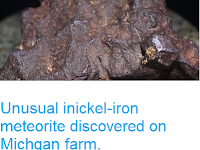The Orionid Meteors are a prolific meteor shower appearing in late October each year and peaking on the nights of 20-22 October, when the shower can produce 50-70 meteors per hour, originating in the constellation of Orion (above and to the right of Orion's right shoulder). This makes them both one of the more prolific meteor showers, and one of the easiest for an amateur enthusiast to locate the radiant of (apparent point of origin). However, this year's display falls shortly before the Full Moon on Wednesday 24 October 2018, so that the glare of the Moon may reduce the visibility of the meteors.
The Radiant Point of the Orionid Meteors. EarthSky.
The shower is caused by the Earth passing through the trail of Halley's
Comet (technically Comet P1/Halley), and encountering dust from the tail of this comet. The dust
particles strike the atmosphere at speeds of over 200 000 km per hour,
burning up in the upper atmosphere and producing a light show in the
process. The Earth does not need to pass close to Halley's Comet for the meteor
shower to occur, it simply passes through a trail of dust from the
comet's tail that is following the same orbital path. Halley's Comet
only visits the Inner Solar System once every 75 years, last doing so in
1986.
The calculated orbit and position of Comet P1/Halley on 18 October 2018. The Sky Live 3D Solar System Simulator.








